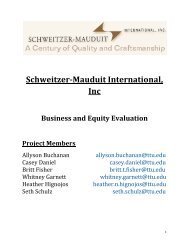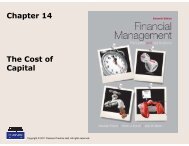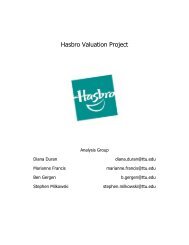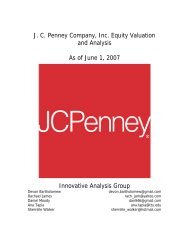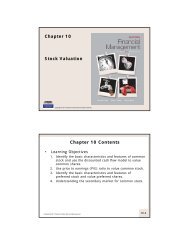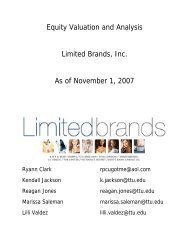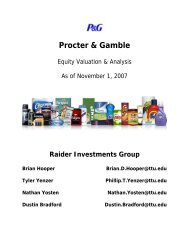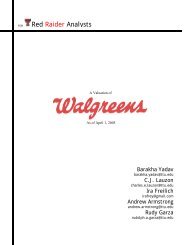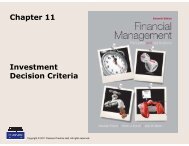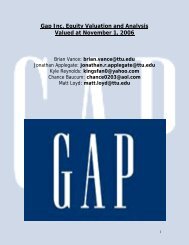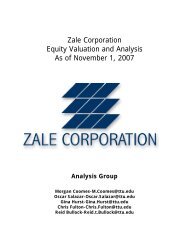Equity Valuation and Analysis - Mark Moore
Equity Valuation and Analysis - Mark Moore
Equity Valuation and Analysis - Mark Moore
Create successful ePaper yourself
Turn your PDF publications into a flip-book with our unique Google optimized e-Paper software.
Inventory = COGS/6.71<br />
This method provides a link between the income statement <strong>and</strong> the balance<br />
sheet. Dividing our COGS, which were previously found on our income statement by<br />
our inventory turnover rate, we were able to forecast inventory for the next 10 years.<br />
The industry average was 6.27, but this was not the best number to choose because of<br />
the heavy fluctuation that occurred from year to year. Therefore, it was more logical to<br />
choose Dow’s inventory turnover because it was less volatile than the industries.<br />
The final Current Asset that we forecasted was accounts receivable. This is yet<br />
another technique used to link the Income Statement with the balance sheet.<br />
9.07 = Net Sales/Accounts Receivable<br />
Adjusted<br />
Accounts Receivable = Net Sales/9.07<br />
By dividing your forecasted Net Sales by 9.07, we were able to forecast out our<br />
accounts receivable for the next ten years.<br />
The st<strong>and</strong>-alone non-current asset that we forecasted was Goodwill. Our<br />
common sized balance sheet gave us 7.5%, which we decreased to 7% after removing<br />
the 2002 <strong>and</strong> 2003 outliers.<br />
Following the forecasts of assets, we computed retained earnings <strong>and</strong><br />
stockholders equity. Since Dow is an equity-based firm, it was important to estimate<br />
equity before liabilities were forecasted. Retained earnings were the first step we took<br />
in this process. To forecast them, we took the previous years retained earnings <strong>and</strong><br />
added the current year net income minus dividends. To forecast total shareholders<br />
equity, we subtracted the retained earnings from the previous years retained earnings.<br />
Then we added that number to the previous shareholders equity to forecast the future<br />
shareholders equity for the next ten years.<br />
Dow Chemical <strong>Analysis</strong> Page 88



